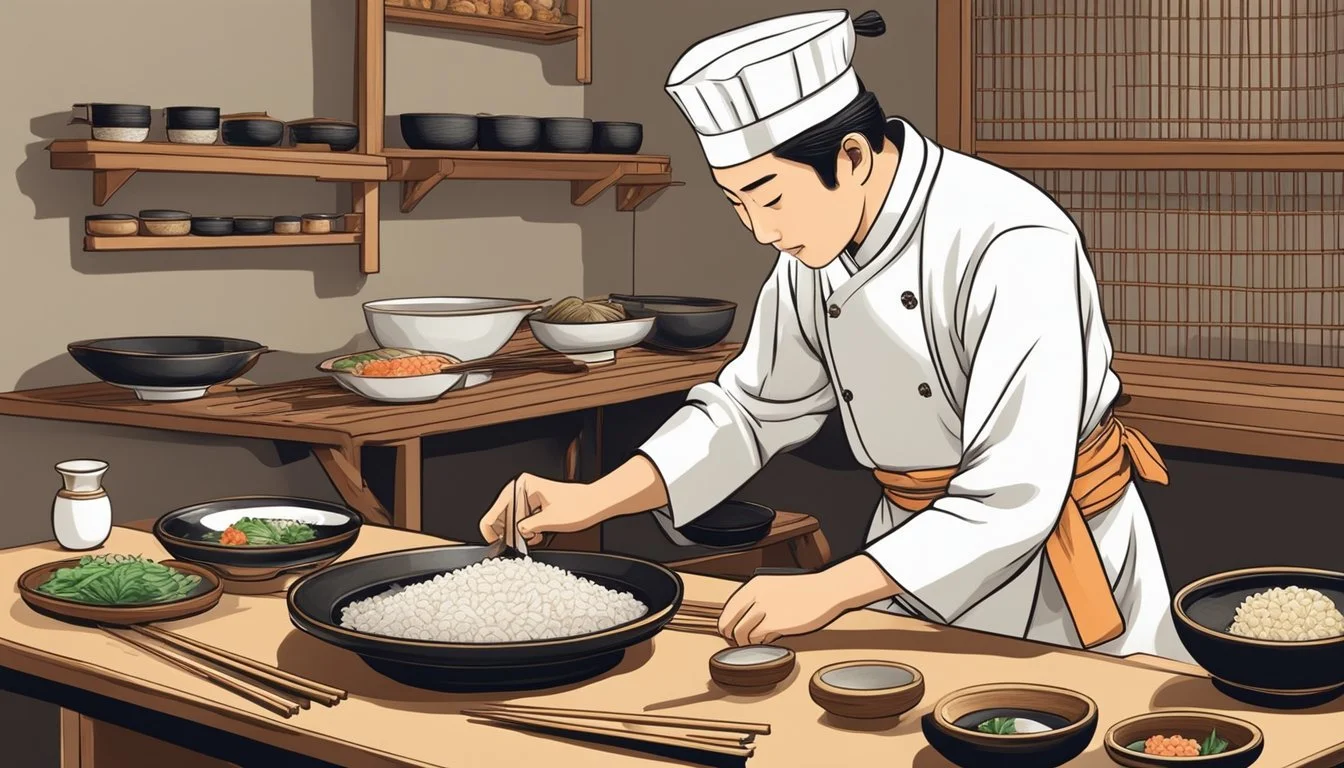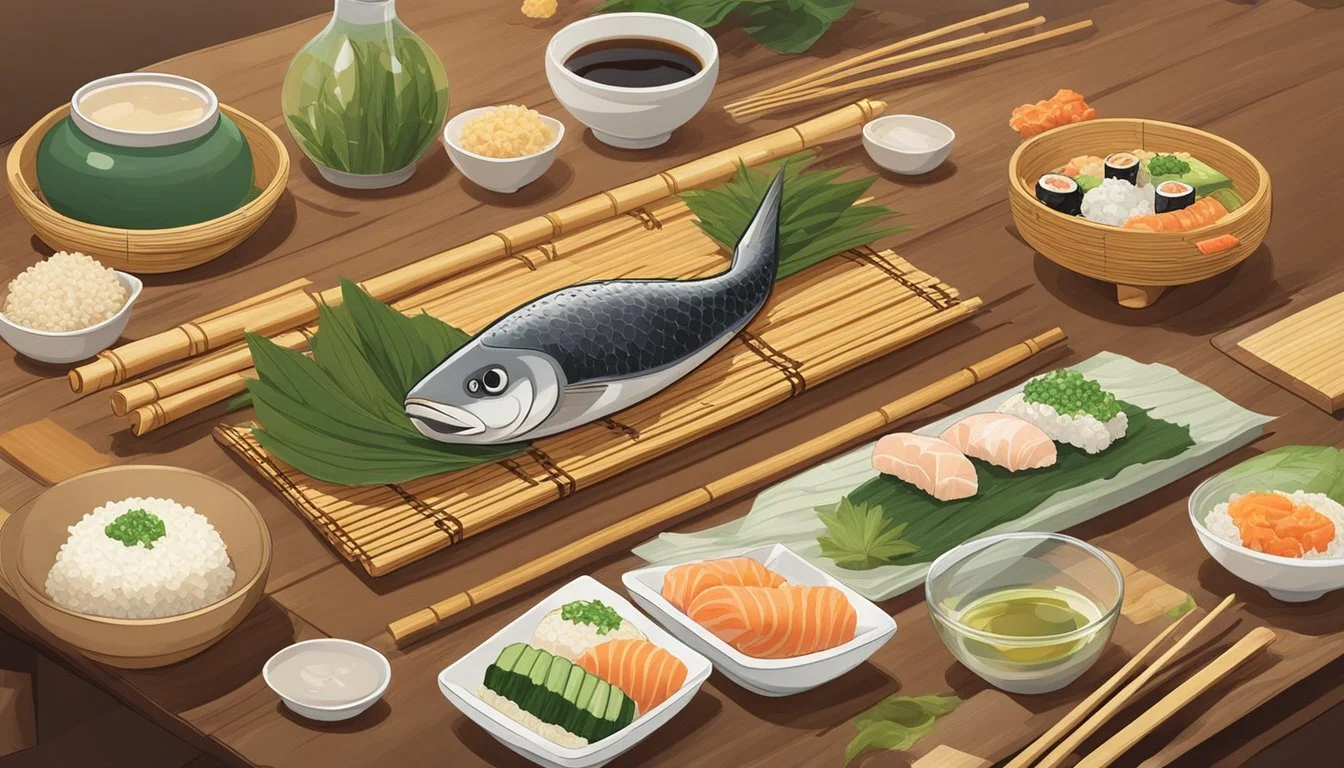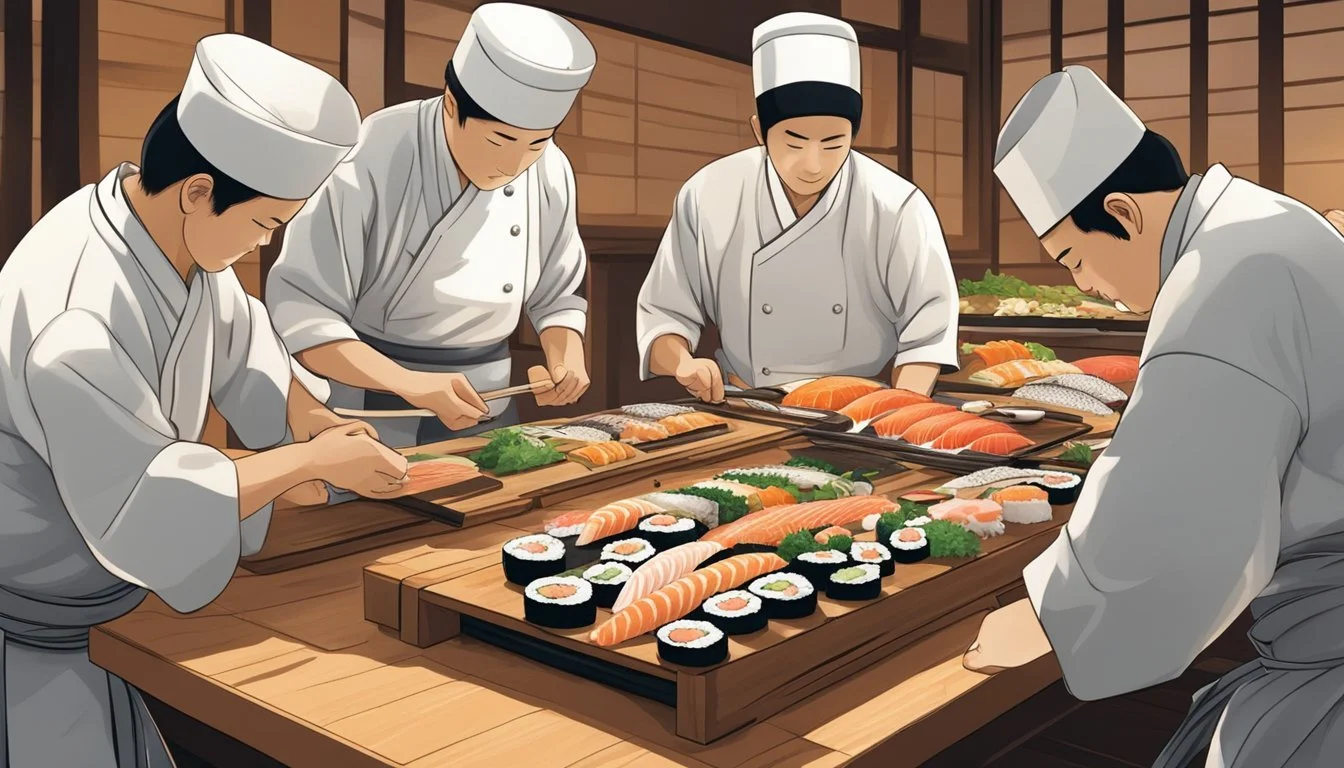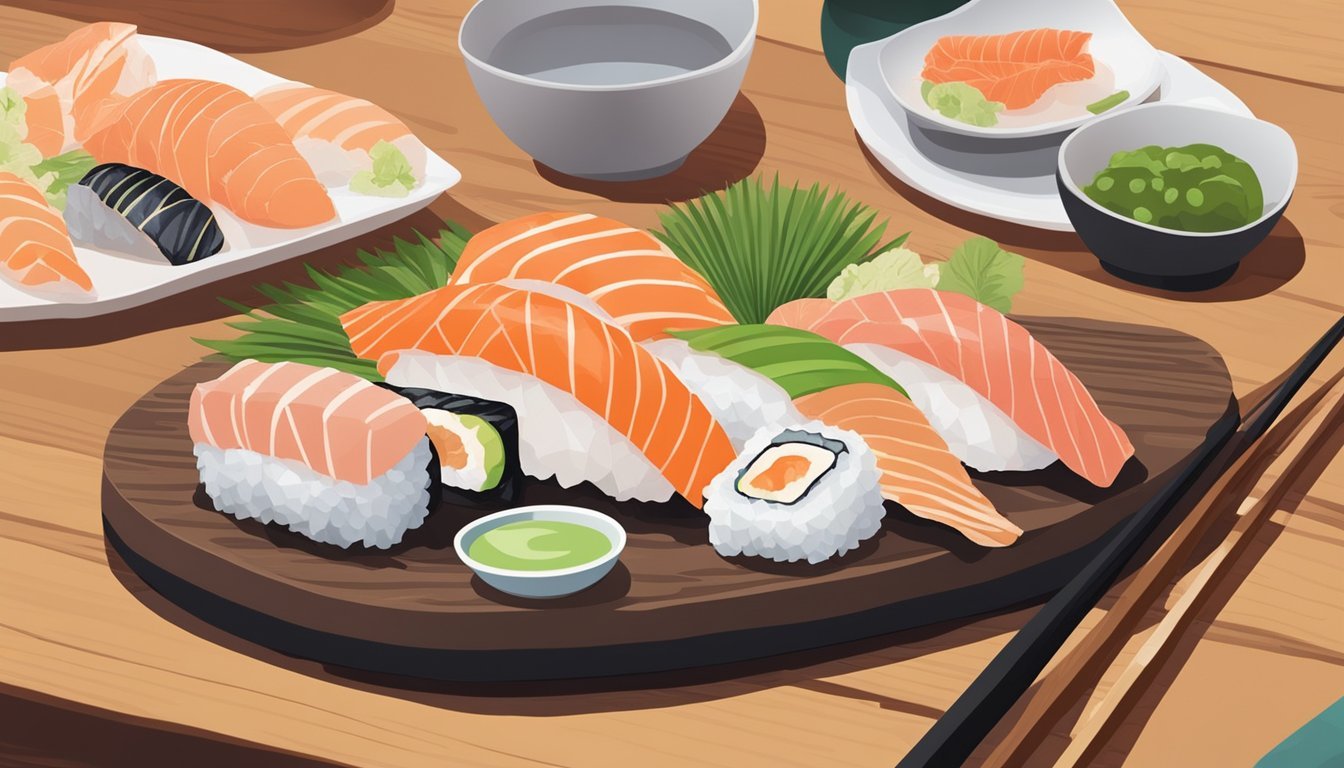10 Fun Facts About Sushi
Uncovering the Delicacies of Japanese Cuisine
Sushi, a culinary art hailing from Japan, has captivated the taste buds of food enthusiasts worldwide. With its unique blend of flavors, textures, and aesthetically pleasing presentation, sushi has become a global sensation. This article will reveal intriguing insights into this beloved dish.
What makes sushi more than just a meal? Beyond its delightful taste and artistic presentation, sushi embodies a rich history and culture that dates back centuries. Readers will discover fascinating facts that showcase the depth and allure of this Japanese staple, from its ancient origins to its modern-day variations.
1) Sushi Dates Back to the 8th Century
Sushi's origins can be traced back to the 8th century. During this period, a method known as nare-zushi emerged in Southeast Asia. It involved fermenting fish with rice to preserve it.
This preservation method spread to Japan, where it was embraced and evolved. Initially, the rice was discarded, and only the fermented fish was consumed.
By the Edo period in the early 19th century, sushi underwent a significant transformation. The fermentation process was shortened, and the rice began to be eaten along with the fish. This new style, known as nigiri-zushi, gained popularity in Tokyo.
Today, sushi has become a global gastronomic phenomenon, celebrated for its flavors and cultural significance.
2) The Term 'Sushi' Refers to Vinegared Rice
The word 'sushi' specifically refers to vinegared rice, not to fish or other ingredients. This distinction is essential because "sushi" comes from "su-meshi," where "su" means vinegar and "meshi" means rice.
Chef Hanaya Yohei, around 1824, perfected the technique of nigirizushi, focusing on vinegared rice topped with raw fish. This method became popular in Tokyo and laid the foundation for modern sushi.
Sushi rice is seasoned with a mix of vinegar, sugar, and salt. This seasoning gives it a unique flavor and sticky texture that holds the ingredients together. Whether it's in rolls, nigiri, or other forms, the vinegared rice is always the base.
Even sushi varieties without fish, like cucumber rolls or avocado rolls, still emphasize the importance of the vinegared rice. The versatility of this base ingredient allows for a wide range of sushi creations.
3) Not All Sushi Contains Raw Fish
Sushi is commonly associated with raw fish, but that's not always the case. Many types of sushi do not include raw fish at all.
For instance, rolls like the California roll use imitation crab meat, which is cooked. Another popular option is the tempura roll, which features fried shrimp or vegetables.
Vegetarian sushi is another alternative that omits raw fish. Ingredients like cucumber, avocado, and pickled vegetables make up these refreshing and tasty rolls.
Cooked fish or seafood can also be featured in sushi. Eel, often served as unagi nigiri, is typically broiled and glazed with a savory sauce.
Sushi's versatility allows for endless combinations, ensuring there's something for everyone, regardless of their preference for raw fish.
4) Different Types Evolved in Various Regions
Sushi has a fascinating regional diversity, with different types evolving based on local ingredients and cultural practices.
In Tokyo, Edomae sushi emerged, emphasizing simplicity and freshness, often using nigiri-style preparation.
In Osaka, oshizushi became popular. This type is pressed sushi, where layers of fish and rice are compressed in a wooden mold.
Kyoto offers sasazushi, which involves wrapping sushi in bamboo leaves for a unique aroma and taste.
In Hokkaido, high-quality seafood like crab and scallops feature prominently in sushi, reflecting the region's rich marine resources.
These regional variations showcase the adaptability and creativity of sushi across different parts of Japan. Each type preserves traditional techniques while incorporating local flavors and ingredients.
5) Omakase Means 'I'll Leave It Up to You'
Omakase is a term in Japanese dining that means "I leave it up to you." This unique style of dining allows the chef to take control of the meal, offering dishes based on seasonal ingredients and their own expertise.
In omakase dining, patrons trust the chef to provide an exceptional culinary experience. This trust allows the chef to showcase their creativity and skills. Diners often receive unique, personalized dishes that they might not have chosen on their own.
Originating in sushi restaurants in Tokyo, or Edo, omakase has expanded to include various types of Japanese dining. It is revered for its elegance and the high quality of food delivered. The experience is considered intimate, as chefs often prepare the dishes right in front of the guests.
The opposite of omakase is "okonomi," which means selecting your own dishes. Both styles highlight different aspects of the dining experience, with omakase emphasizing trust and the chef’s artistry.
6) Nigiri and Sashimi Are Often Confused
Nigiri and sashimi are staples in Japanese cuisine, yet they are frequently mixed up.
Nigiri consists of a small mound of seasoned sushi rice topped with fish, seafood, or other ingredients. The seasoned rice is commonly prepared with short-grain rice, rice vinegar, sugar, and salt.
Sashimi, in contrast, is simply thinly sliced pieces of raw fish or meat, served without any rice. This makes sashimi primarily about the purity and quality of the fish itself.
The key difference lies in the presence of rice; nigiri includes it, while sashimi does not. Additionally, nigiri is a type of sushi, and sashimi is not classified as sushi since sushi always includes vinegared rice.
Sashimi can be more expensive than nigiri due to the larger quantity and higher quality of fish used. Understanding these distinctions helps in appreciating the unique qualities of each dish.
7) Maki Rolls Are Popular in the West
Maki rolls, also known as makizushi, have become a favorite among sushi lovers in Western countries. These rolls consist of vinegared rice, fish, or vegetables, all wrapped in a sheet of nori (seaweed).
Introduced to Western palettes, maki rolls have adapted to include local ingredients and flavors, making them even more attractive to foreign consumers. This fusion has helped increase their popularity outside Japan.
The simplicity and variety of maki rolls contribute to their widespread appeal. Diners can find them in a range of settings, from high-end sushi bars to casual grocery stores.
Inside-out rolls, or uramaki, where the rice is on the outside, are particularly popular in the West. This style makes it easier for those who might be hesitant about trying traditional sushi.
Maki rolls have also benefited from the growing awareness of sushi’s health benefits. Packed with omega-3 fatty acids, protein, and vitamins, these rolls are seen as a nutritious option for a meal or snack.
Their versatility means they can be enjoyed by vegetarians and meat-eaters alike, with options ranging from cucumber rolls to spicy tuna. This inclusivity has broadened their appeal across diverse dietary preferences.
As sushi restaurants and conveyor belt sushi spots proliferate, maki rolls have secured their place as a beloved sushi variety in the Western world.
8) Temaki is a Hand-Rolled Cone of Sushi
Temaki, also known as hand-rolled sushi, is a fun and casual take on traditional sushi. Instead of using a bamboo mat to roll the sushi into neat, even pieces, the ingredients are simply rolled by hand. This results in a cone-shaped piece of sushi that's easy to hold and eat.
Typically, a sheet of nori (seaweed) is cut in half or quartered before being used. This smaller size makes it easier to roll and creates the perfect hand-held size. The nori is laid shiny side down on the palm, and a thin layer of sushi rice is spread onto one side.
Various ingredients are then placed on top of the rice. Common fillings include sashimi like tuna and salmon, vegetables like cucumber and avocado, and extras such as caviar. After the fillings are added, the nori is rolled into a cone, encasing the ingredients within.
Temaki is often enjoyed at casual dining spots and at home. It's particularly popular for "roll your own" sushi parties, where guests can customize their hand rolls with their favorite ingredients.
9) Fugu Sushi Can Be Deadly if Prepared Incorrectly
Fugu sushi, made from the pufferfish, is renowned for its potential danger. The fish contains a potent toxin called tetrodotoxin, which is more lethal than cyanide.
Preparation of fugu requires meticulous care. Chefs in Japan undergo extensive training to earn a license to serve this delicacy.
Mistakes in preparation can lead to severe poisoning. Symptoms include respiratory paralysis and asphyxiation, which can be fatal if not treated immediately.
Despite the risks, some people are drawn to fugu for its unique taste and the thrill of danger. In Japan, fugu is often served as sashimi, with paper-thin slices arranged elegantly.
Only licensed and experienced chefs are trusted to prepare fugu, ensuring the safety of their patrons. The government's strict regulations help reduce the number of fugu-related incidents.
10) The World's Most Expensive Sushi Costs $2,000
The world's priciest sushi roll costs $2,000. This opulent creation was made by Filipino chef Angelito Araneta Jr. in June 2010.
The sushi is adorned with African diamonds, edible gold leaf, and pearls. It’s a sparkling masterpiece that combines luxury with culinary artistry.
This expensive dish highlights how sushi can transcend food to become a symbol of extravagance. It demonstrates the meticulous craft and innovation in high-end sushi preparation.
Origins Of Sushi
Sushi has a rich history that began with methods of preserving fish and has transformed dramatically over centuries, originating in Southeast Asia and later becoming a key piece of Japanese culture.
Historical Background
Sushi's origins trace back to Southeast Asia, specifically beginning around the 2nd century BC. Initially, fish was preserved through fermentation by wrapping it in rice, a practice known as narezushi. This method allowed people to store fish without refrigeration and provided an essential food source during times when fresh fish was unavailable.
Japan adopted this method and refined it over time. The term "sushi" is derived from an ancient grammatical form that means "sour-tasting," which refers to the fermented nature of the original dish. By the 8th century, sushi had become a prominent food in Japan, evolving from a preservation method to a cuisine.
Evolution Over Time
Sushi evolved significantly from its early days. The Edo period (1603-1868) marked a significant change with the introduction of hayazushi, where fish and rice were combined and consumed simultaneously. This period gave birth to various sushi styles including nigiri and makizushi.
In the 19th century, Hanaya Yohei introduced the concept of edomaezushi in Tokyo, serving fresh fish over vinegared rice. This gave rise to the modern sushi known today.
Technological advancements, such as refrigeration and improved transportation, facilitated the global spread of sushi, making it a popular dish worldwide.
Types Of Sushi
Sushi offers a variety of forms, each with unique characteristics. This section explores four main types: Nigiri, Sashimi, Maki, and Temaki. Each type has distinct preparation methods and ingredients that make them unique within the sushi world.
Nigiri
Nigiri is a hand-pressed type of sushi, consisting of a small ball of vinegared rice topped with a slice of fish or other seafood. The fish is often raw, although it can also be cooked or seared.
Usually garnished with a touch of wasabi between the fish and the rice, Nigiri allows the flavors to blend perfectly. The fish used can vary, including options like tuna, salmon, and shrimp. The simplicity and balance between rice and fish make Nigiri a favorite for sushi purists. Often, a sliver of nori (seaweed) is used to secure the topping, especially for delicate items.
Sashimi
Sashimi is thinly sliced raw fish or seafood, served without rice. It highlights the quality and freshness of the fish. Common sashimi options include tuna, salmon, mackerel, and octopus.
Sashimi is typically arranged with garnishes like shredded daikon radish and shiso leaves. Each slice of fish is cut in a specific way to enhance its texture and flavor. The emphasis is on pure, unadulterated taste, often accompanied by soy sauce and wasabi for dipping. Sashimi showcases the chef's skill and the fish's pristine quality.
Maki
Maki refers to rolled sushi, with rice, fish, and vegetables wrapped in seaweed (nori). These rolls are cut into bite-sized pieces. There are several variations based on the thickness and ingredients within the roll.
Hosomaki is a thin roll typically containing one main ingredient, such as cucumber or tuna. Futomaki is a thicker roll filled with multiple ingredients, creating a more complex flavor profile. Uramaki, or inside-out rolls, have rice on the outside and nori inside, often sprinkled with sesame seeds or fish roe. Maki provides a versatile and visually appealing option within the sushi realm.
Temaki
Temaki is a hand-rolled cone of sushi, resembling an ice cream cone. A sheet of nori is filled with rice, fish, and vegetables, then rolled into a cone shape.
This type of sushi is more casual and is often eaten with hands rather than chopsticks. The filling typically includes a variety of fresh ingredients, such as sashimi-grade fish, avocado, and cucumber, offering a blend of textures and flavors in each bite. Temaki is perfect for a quick, satisfying meal and allows for endless customization based on personal preferences.
Cultural Significance
Sushi holds a prominent position in Japanese culture, dating back centuries. It began as a method for preserving fish in fermented rice.
As time went on, sushi evolved into an essential part of Japanese cuisine, often enjoyed during celebrations and festivals.
Sushi chefs, known as itamae, undergo years of training, emphasizing the respect for ingredients and traditional techniques.
The art of sushi preparation is meticulous, reflecting a deep cultural reverence for harmony and balance.
In modern Japan, sushi is more than just food. It's a representation of national pride. Many festivals and events feature sushi-making competitions, showcasing both skill and creativity.
Traditional sushi restaurants often follow specific rules of etiquette, further highlighting its cultural importance.
Outside Japan, sushi has become a symbol of Japanese culture worldwide. Popularized globally in the late 20th century, it now enjoys a status as a trendy, sophisticated cuisine.
In many countries, sushi is associated with healthy eating due to its nutritious ingredients, reflecting the Japanese emphasis on health and well-being.









